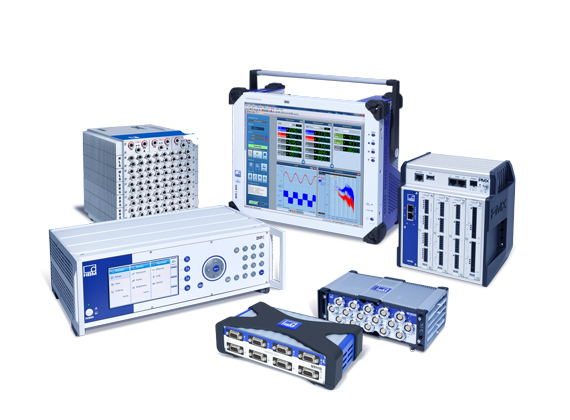A data acquisition system is based on several key components. When measuring analog signals, the foremost component is the sensor used to acquire a mechanical value such as mechanical stress or vibration. Various transducers are employed to acquire analog signals of interest with no universal solution available for comprehensive monitoring of mechanical phenomena. The success of a data acquisition system subsequently hinges on its available sensor connections.
Compatibility with a wide range of sensor and transducer types enhances the flexibility of the data acquisition system and ensures that the broadest possible range of signals can be acquired, amplified, and sampled. Amplification is carried out by the data acquisition system itself, enhancing the output amplitude of comparatively small input signals delivered by the sensor.
To store and analyze the acquired signals, they must first be sampled and digitized. This is most often carried out in parallel for all sensors signals connected which ensures the highest possible signal fidelity, compared to more “entry level” serial (or multiplexed) analog to digital conversion. Parallel sampling can be carried out at a resolution of up to 24-bit, representing an estimated range of ~ 16 million discrete values.
What separates a data acquisition system from a standard amplifier or data logger, however, is the ability to locally store, display, and analyze input data. Incoming signals can be visualized in real-time which ensures that all amplification and digitization settings are correctly established. This provides ongoing process control capabilities that can be manually monitored or allowed to run autonomously.

